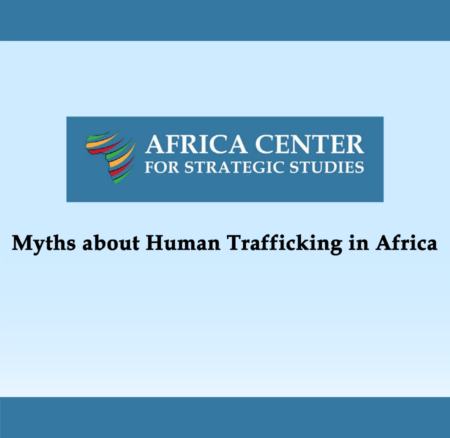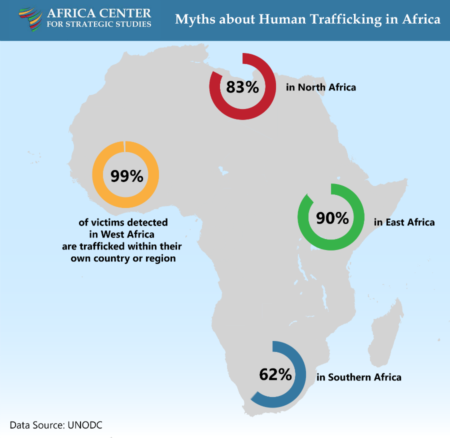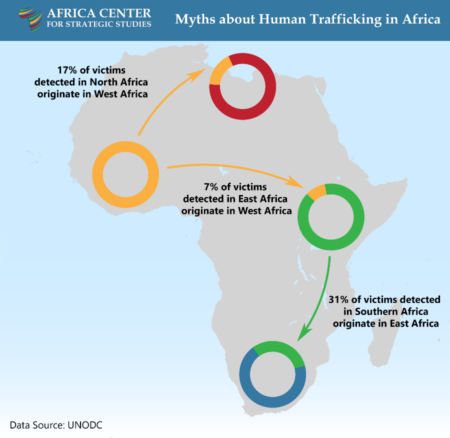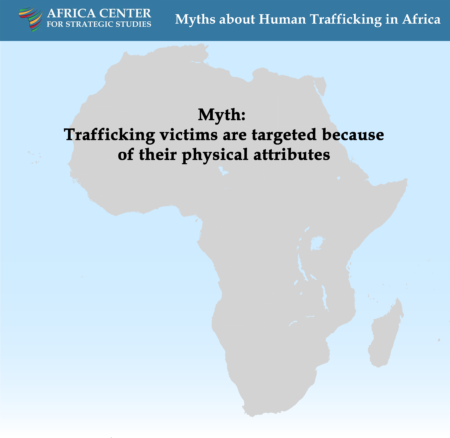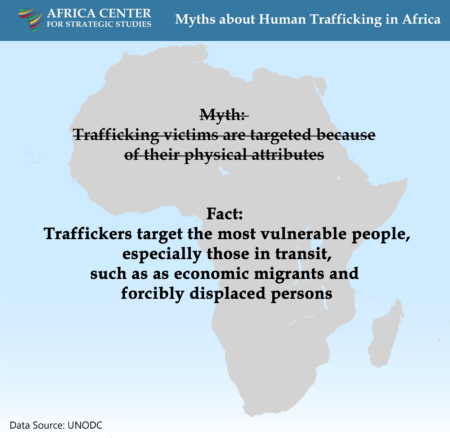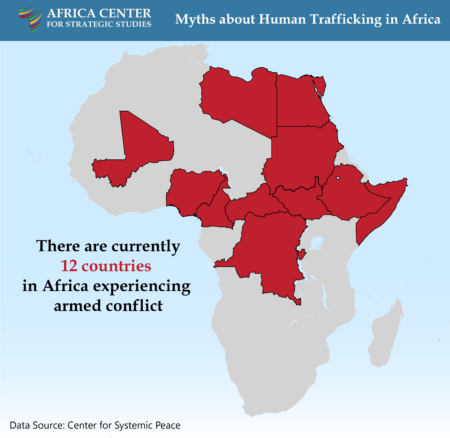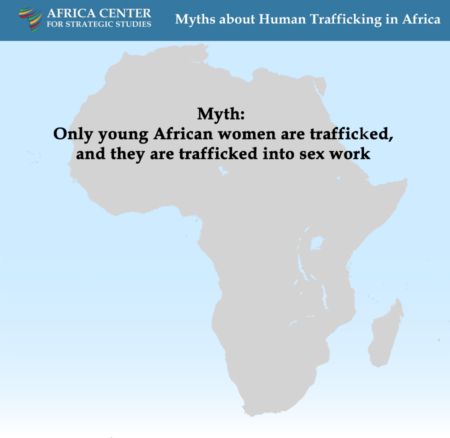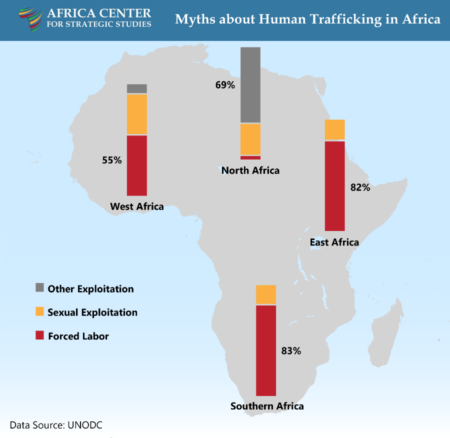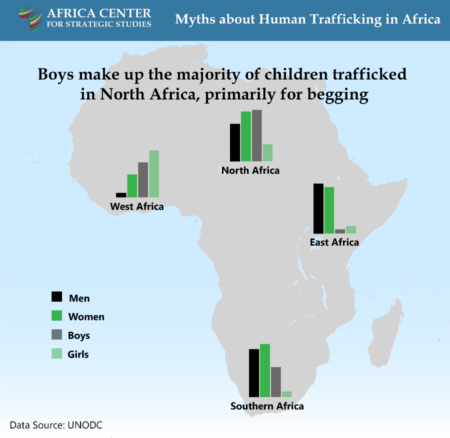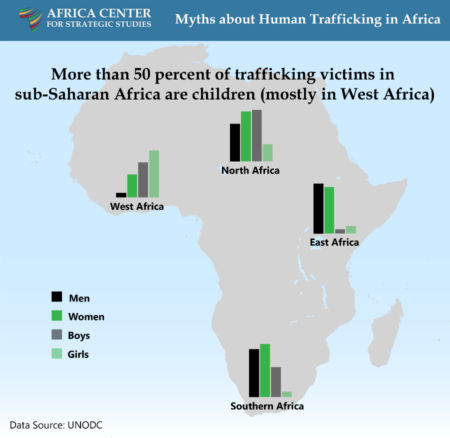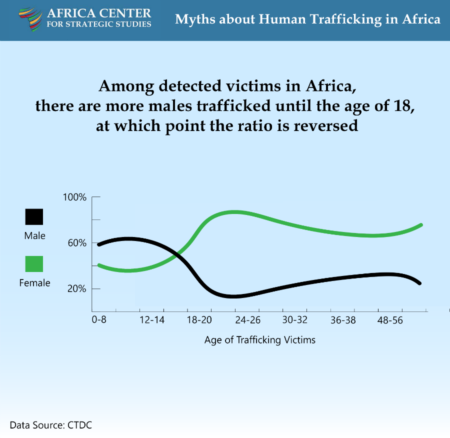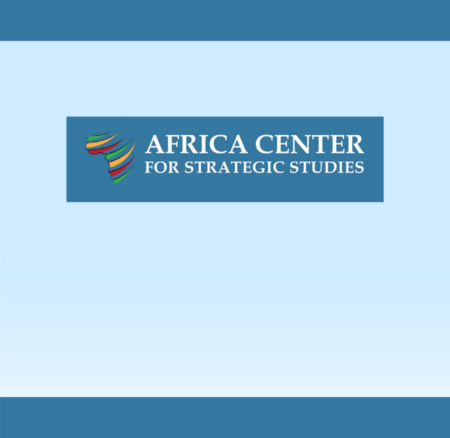
Human trafficking involves taking control of people, through duplicity or force, for exploitation or economic gain.
At any given moment 3.5 million Africans are being trafficked.
Many aspects of trafficking in Africa are misunderstood …
99% of victims detected in West Africa are trafficked within their own country or region
83% in North Africa
90% in East Africa
62% in Southern Africa
17% of victims detected in North Africa originate in West Africa
7% of victims detected in East Africa originate in West Africa
31% of victims detected in Southern Africa originate in East Africa
Fact: Traffickers target the most vulnerable people.
This includes those in transit, such as economic migrants and forcibly displaced persons.
Fact: Most African victims are trafficked into forced labor, often in fields such as agriculture, domestic service, and manufacturing.
More than 50 percent of trafficking victims in sub-Saharan Africa are children (mostly in West Africa).
Among detected victims in Africa, there are more males trafficked until the age of 18, at which point the ratio is reversed.
More on: Trafficking


